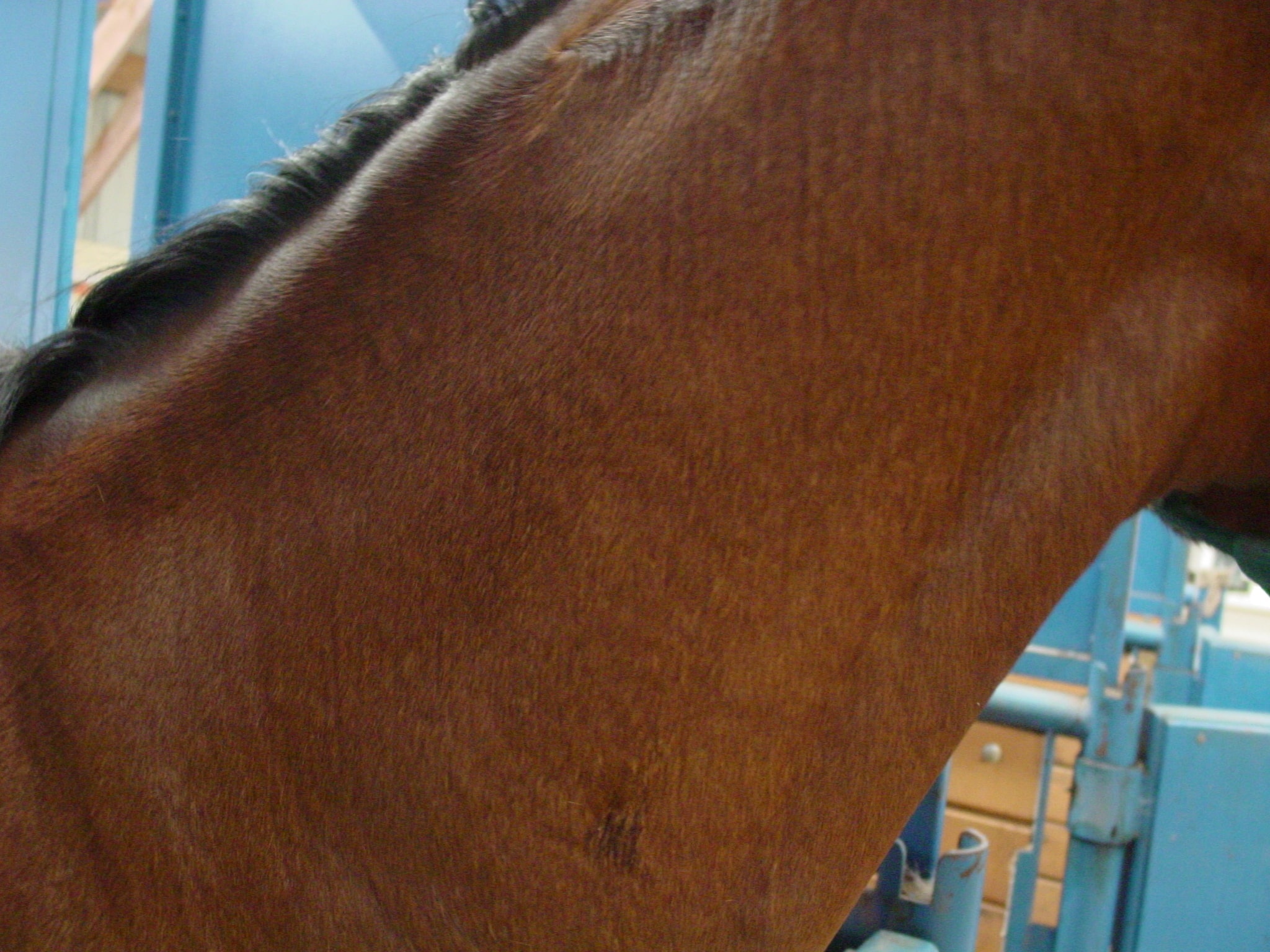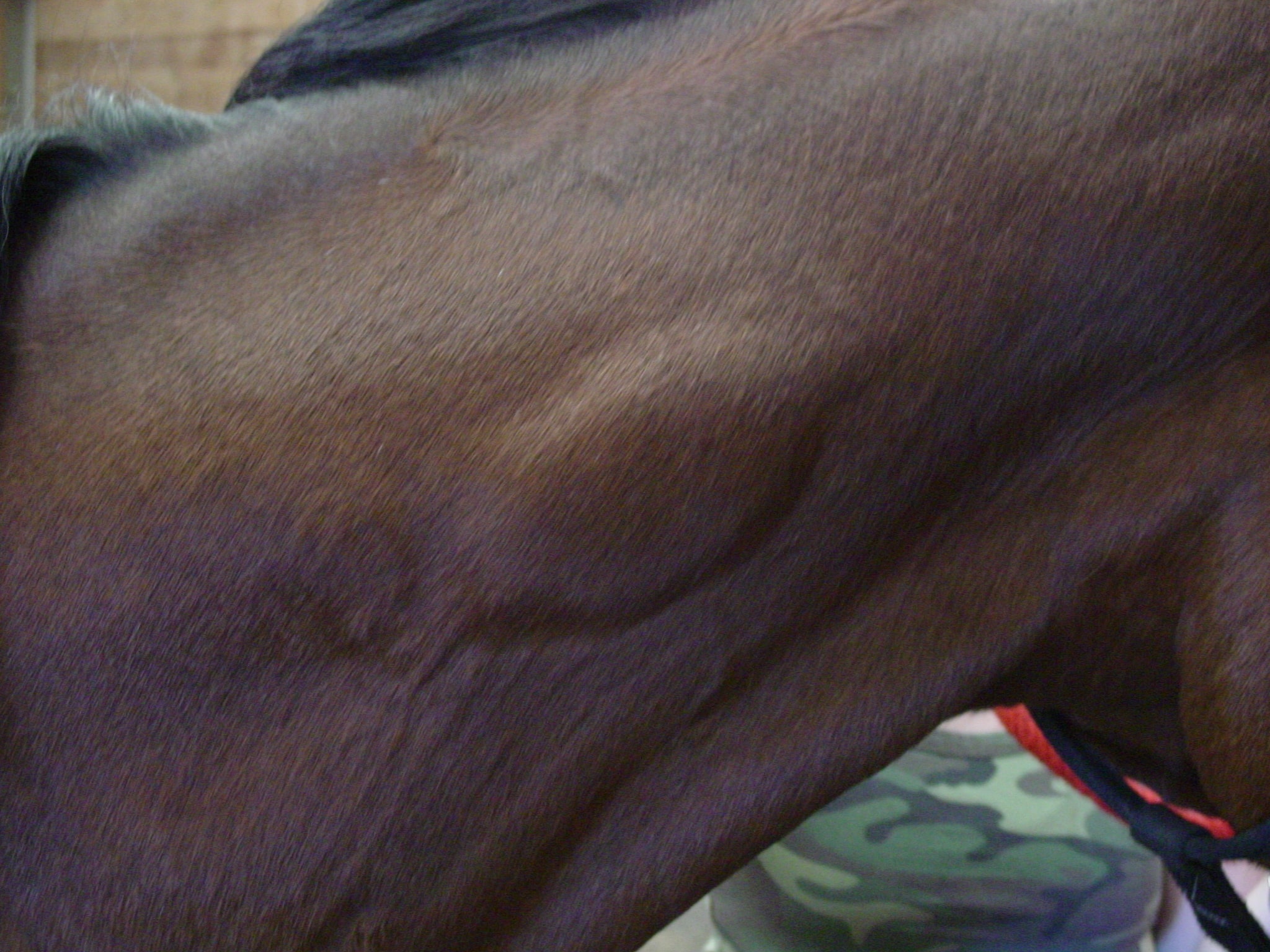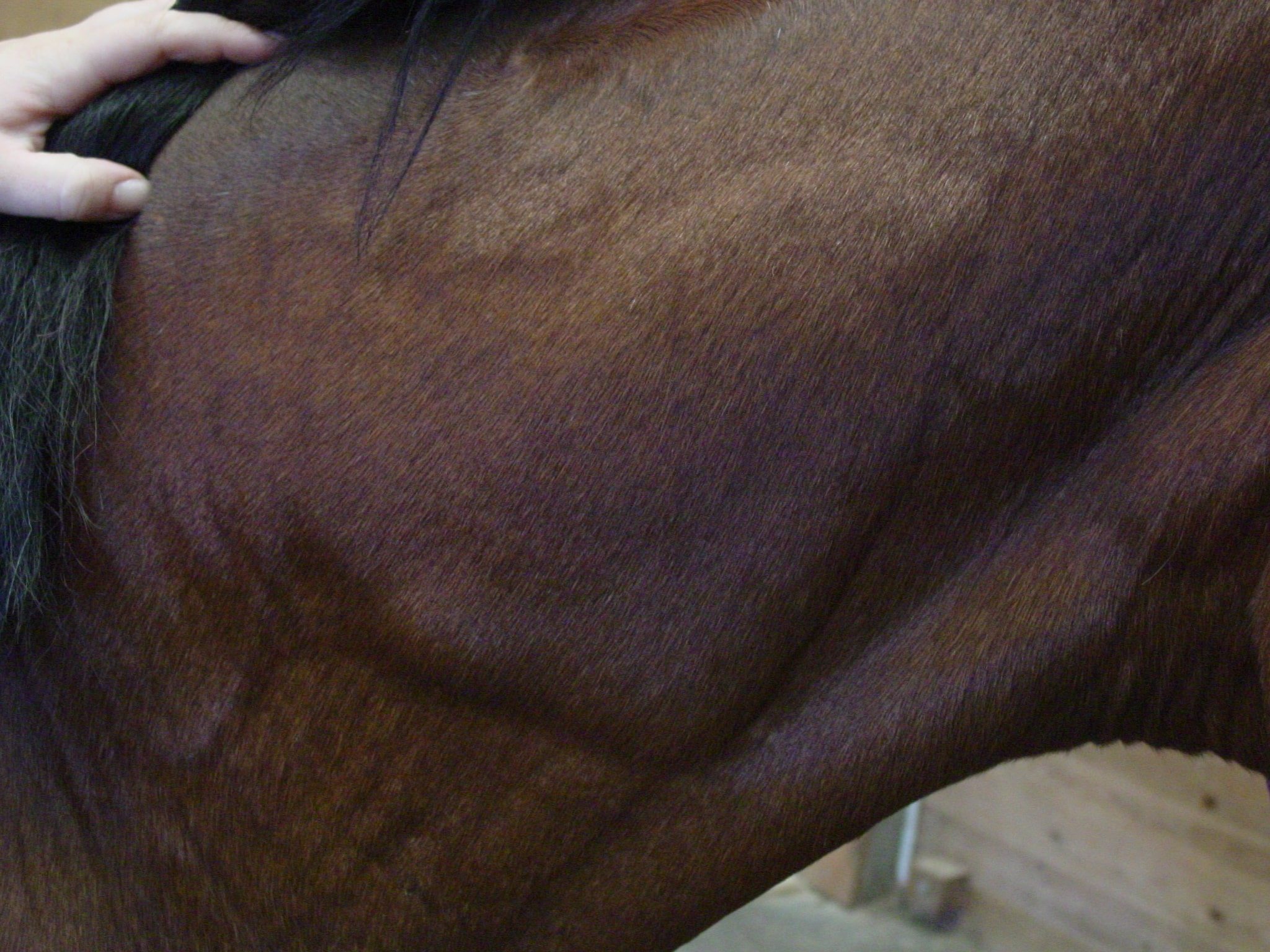Top Links
Journal of Veterinary Science and Animal Husbandry
ISSN: 2348-9790
Effects of Long-Acting Injectable Progesterone Given Two Days after Luteolysis on Estrus Suppression in Mares
Copyright: © 2018 Kutzler MA. This is an open-access article distributed under the terms of the Creative Commons Attribution License, which permits unrestricted use, distribution, and reproduction in any medium, provided the original author and source are credited.
Related article at Pubmed, Google Scholar
Administration of exogenous progesterone or progestin can suppress estrous behavior in mares. Compounded long-acting formulations of progesterone are widely available. The objective of this study was to determine if a long-acting injectable progesterone formulation would suppress behavioral estrus in mares. Five mares were monitored daily by rectal palpation and transrectal ultrasonography to insure that all mares were cycling normally. Endogenous progesterone was removed through lysis of the corpus luteum seven days post-ovulation with prostaglandin F2 alpha (PGF2α). Two days following PGF2α administration, mares received 2 g of long-acting progesterone intramuscularly. Estrous behavior was determined daily by individually exposing mares to a stallion beginning two days before injection of long-acting progesterone until ovulation occurred. Serum progesterone concentrations were significantly elevated (>2 ng/mL) for 10 days following treatment with a long-acting injectable progesterone. Behavioral estrus suppression during this period was minimal and not significant. All mares developed local injection site reactions and half the mares developed febrile responses following treatment. In conclusion, the long-acting compounded formulation of progesterone elevates progesterone concentrations for 10 days but does not suppress estrous behavior to a stallion. Due to the side effects associated with this treatment, long-acting formulations of injectable progesterone are not appropriate for use in performance horses.
Keywords: Equine; Estrous Behavior;Injection Site Reaction
The mare is a seasonally polyestrous long-day breeder with a 21-day estrous cycle [1]. In the northern hemisphere mares typically cycle from mid-February to mid-November, with spring and fall transition periods between February and May and September and October respectively [1]. The length of behavioral receptivity (estrus) during the estrous cycle can range from 4-7 days, with ovulation occurring 24-48 hours prior to the end of the estrous period [1]. Typical estrous behaviors when presented to a stallion or a gelding include squatting with the tail raised, urinating, and everting the clitoris [1]. The mare will cease to show estrous behavior following ovulation, due to the increasing serum concentration of progesterone from the corpus luteum. This phase of the estrous cycle is known as diestrus and usually lasts 15-19 days [1].Temperament and performance of mares can vary with the ovarian cycle with some mares becoming distracted and unmanageable during estrus [2]. These behaviors are undesirable in performance horses, particularly in the height of the competitive season. Administration of exogenous progesterone or progestin (synthetic form of progesterone) can suppress estrous behavior in mares. Intramuscularly-administered progesterone suspended in sesame oil can be effective for suppressing estrous behavior but it must be given daily (0.3-0.6 mg/kg of body weight) to maintain effective concentrations of progesterone for blocking estrous behavior [3]. Daily oral administration of altrenogest (Regu-Mate®; Intervet, Millsboro, Delaware, USA), a synthetic progestin, at a dosage of 0.044 mg/kg of body weight is also effective at suppressing estrus within three days of initiating treatment with a return to estrous behavior four days following cessation [4]. Though effective, it is sometimes difficult to administer a consistent dosage of altrenogest due to poor palatability. In cattle, medroxyprogesterone acetate (Depo-Provera®; Upjohn, Kalamazoo, Michigan, USA), has been effective in suppressing estrus and maintaining pregnancy [3]. However, this product is unable to suppress estrus or maintain pregnancy in mares when administered intramuscularly at 250 mg or 1000 mg per mare, respectively [5,6]. A single subcutaneous implant containing norgestomet (Synchromate-B®; Searle Agri Inc., Elburn, Illinois, USA; 6 mg/mare) or up to 80 subcutaneous implants containing progesterone (totaling 2 g/mare) with estradiol benzoate (totaling 200 mg/mare)(Synovex-S®; Syntex Animal Health, West Des Moines, Iowa, USA) were also unable to suppress estrus in mares [7,8].
A long-acting proprietary formulation of progesterone in a low viscosity non-aqueous liquid is compounded for use in mares at 200 mg/mL (BioRelease® P4 LA200; BET Pharm, Lexington, Kentucky, USA) [9]. It was determined that serum progesterone concentrations of 2-6 ng/mL could be achieved for about 10 days following injection of 1.4 g of this long-acting progesterone formulation [10]. In a study to determine its efficacy for pregnancy maintenance, Ball and coworkers compared dosages of 0.75 g, 1.5 g and 2.25 g of long-acting progesterone and concluded that the 2.25 g/mare dosage was most effective for pregnancy maintenance [11]. The specific objective for this investigation was to determine if serum progesterone concentrations, achieved from a 2 g injection of long-acting progesterone (200 mg/mL; as recommended by the manufacturer) would inhibit behavioral estrus in mares for a prolonged period. This study will expand the current literature by reporting on the efficacy of a compounded long-acting progesterone formulation for estrus suppression in mares. Based on the results of previous studies demonstrating prolonged elevation of progesterone concentrations (>2 ng/mL) for at least 10 days, we hypothesized that this dosage would result in estrus suppression during this period [10,11].
Between the months of June and August, five mares of various breeds (Thoroughbred, Appaloosa, Anglo Arab) ranging in age from 13-19 years (mean = 16.2 years) were group-housed and fed a diet of mixed-grass hay and water ad libitum. Subjects were randomly selected from the teaching horse herd at the Oregon State University Carlson College of Veterinary Medicine, located in Corvallis, Oregon, USA. All of the experimental procedures described in this study were approved by the Institutional Animal Care and Use Committee at Oregon State University prior to the research. Timing of ovulation was determined by daily transrectal palpation and ultrasonography, using a 5.0-MHz, B-mode, linear array ultrasound scanner (Sonovet SV600, Universal Medical Systems Inc., Bedford Hills, New York, USA). The mares were monitored for three estrous cycles before treatment and one estrous cycle after treatment to ensure that all mares were cycling normally. Estrous cycling was determined by rectal palpation and ultrasonography. Endogenous progesterone was removed through lysis of the corpus luteum seven days post-ovulation with prostaglandin F2alpha (PGF2α; Lutalyse®; Upjohn Pharmacia, Kalamazoo, Michigan, USA; 10 mg intramuscularly). It was necessary to remove endogenous progesterone so that the serum concentration of progesterone measured and the suppression of estrous behavior recorded was only the result of the exogenous progesterone administered. Two days following PGF2α administration, each mare received a 2 g dose of long-acting progesterone (BioRelease® P4 LA200; BET Pharm, Lexington, Kentucky, USA), 10 mL intramuscularly in the neck. All mares received progesterone from the same bottle. Beginning two days before injection of long-acting progesterone, estrous behavior was determined by individually exposing mares to a stallion every other day until ovulation occurred. A numerical scale for quantifying estrous behavior developed by Gorecka and colleagues was used to determine the level of behavioral estrus displayed by each mare[12] (Table 1). The scale used was a one-to-eight scale ranging between completely non-receptive with attempts to attack the stallion to completely receptive to the stallion showing no non-receptive behavior. Blood samples were collected from the jugular vein every other day until the subsequent ovulation. Serum was separated and stored at -20 oC until assayed for progesterone. Progesterone concentrations were determined by a commercial solid-phase radioimmunoassay (Coat-A-Count; Diagnostic Products Corp, Los Angeles, California, USA) previously validated for use in mares [13]. The assay sensitivity was 0.02 ng/mL and the intra-assay coefficient of variation was <5%. Data were expressed as a mean ± standard deviation. Mean serum progesterone concentrations and estrous behavior were compared to pretreatment values over time using an analysis of variance (ANOVA) where treatment was given on day 0. Significance was defined as p<0.05.
All of the mares were cycling normally prior to and following treatment cycle (data not shown). In all mares, serum progesterone concentrations were less than 1 ng/mL on the day of treatment with long-acting progesterone (indicating complete luteolysis). Mean serum progesterone concentrations were found to be significantly higher on days 1 and 2 compared to day -1 and on days 1,2,4, and 6 compared to day 0, confirming the removal of endogenous progesterone concentration (Figure 1). In addition, serum progesterone concentrations were significantly higher on days 1 and 2 compared to days 8 and 10, demonstrating the clearance of the exogenous progesterone from circulation. None of the mares displayed non-receptive behavior at the time of long-acting progesterone administration (Figure 2). Estrus suppression was not observed in mares following progesterone treatment in spite of elevated serum progesterone concentrations (>2 ng/mL) (p>0.50; Table 2). Unexpectedly, all of the mares developed diffuse swelling and pain around the injection site that persisted for up to 8 days (Figure 3). In addition to the local tissue reaction, 50% of mares developed an increased core body temperature greater than 38 °C (101°F) beginning one day after the injection and lasting up to four days.
Loy and Swan first demonstrated the estrus suppressive effects of exogenous progesterone in mares [14]. Munro and colleagues found that with few exceptions, estrous behavior was correlated with progesterone concentrations below 2 ng/Ml [15]. In the current study, none of the mares demonstrated behavioral estrus suppression following administration of long-acting progesterone (2 g/mare), despite elevated serum progesterone concentrations ranging from 1.07-18.53 ng/mL (Table 3). It is not known if pharmacologic removal of endogenous progesterone with PGF2α could have affected the behavioral responses to exogenous progesterone. Additional research administering exogenous progesterone to mares towards the end of diestrus but without artificially shortening the estrous cycle would be needed to answer this question. In addition to progesterone, estrous behavior is also influenced by serum estradiol 17-β concentrations [16]. Overlapping increasing endogenous estradiol 17-β concentrations with decreasing exogenous progesterone concentrations may explain the failure to suppress estrus (receptive behavior) in the current study. Receptive behavior is variable between mares as can be seen in the current study. Some mares showed receptive behavior only when they were in physiological estrus, but others showed no non-receptive behavior when they were in physiologic diestrus. Decreased uterine and cervical tone, endometrial edema and a growing dominant follicle were observed in all mares following treatment, which culminated in ovulation an average of 13.7±2.9 days following exogenous progesterone treatment. The interval to ovulation following PGF2α administration was similar when compared to a previous report by Loy and colleagues of an average of 10-12days [17]. Although the administration of long-acting injectable progesterone to estrous mares (2 g/mare) was ineffective at suppressing behavior towards the stallion, this study shows that this treatment may serve as a means for ovulation postponement during routine breeding management. Adverse local reactions similar to those reported here have been observed following subcutaneous injections of 500 mg of crystalline progesterone [14]. However, in the present study, half of the mares also became febrile following the injection. A sample of the progesterone formulation was cultured and found to be negative for the presence of aerobic and anaerobic bacteria. Since no local injection site reactions were seen following the administration of intramuscular PGF2α two days prior to administering the long-acting progesterone, it can be concluded that the adverse reactions observed were direct results of administration of this long-acting compounded progesterone formulation (200 mg/mL; 10 mL). This is in contrast to a study that found no significant injection site reactions using 300-750 mg (2-5 mL) of a less concentrated progesterone formulation (150 mg/mL) by the same manufacturer (150 mg/mL) for equine pregnancy maintenance where a 10 mL dose was split into two injection sites on the same side of the neck [18]. Further studies are needed to determine if the source of the inflammatory reactions observed in the present study were a result of the concentration of the long-acting compounded progesterone formulation (200 mg/mL) or the volume administered (10 mL).
In conclusion, we found that administration of long-acting compounded progesterone (2 g/mare) resulted in elevated serum progesterone concentrations for 10 days but did not significantly suppress estrus. Based on the possibility of local and systemic adverse reactions, the use long-acting injectable progesterone formulations are not recommended for estrus suppression in performance horses.
We thank Merck-Merial Research Scholarship for funding this research. We thank Dr. Patrick Burns and Dr. Robert Douglas of BET Labsfor their help developing the experimental design and donating the product to be evaluated. We also thank Steve Lamb and Val Salerno from the Endocrinology Laboratory at Cornell University for performing the progesterone radioimmunoassay.
 |
| Figure 1: Mean� standard deviation serum progesterone concentrations one day prior until ten days following intramuscular administration of long-acting progesterone formulation (2 g/mare). a- serum progesterone concentration is significantly different from day -1, b- serum progesterone concentration is significantly different from day 0, c- serum progesterone concentration is significantly different from day 8, d- serum progesterone concentration is significantly different from day 10 |
 |
| Figure 2: Mean� standard deviation estrous behavior scores two days prioruntil ten days following intramuscular administration of long-acting progesterone formulation (2 g/mare). Day of treatment is indicated as day 0. Estrous behavior did not significantly change since day 0 (p>0.50) |
 |
 |
 |
| Figure 3: Typical local reaction that developed following intramuscular administration of long-acting progesterone formulation (2 g/mare) before the treatment (day 0, labeled as A), one day after treatment (day 1, labeled as B) and two days after treatment (day 2, labeled as C) |
Score |
Description |
1 |
Non-receptive behavior (tail switching, moving around, squealing, holding ears back, attempts to kick); |
2 |
Non-receptive behavior (tail switching, moving around, squealing, holding ears back,attempts to kick); |
3 |
Non-receptive behavior (tail switching, squealing, holding ears back, attempts to kick); mare stands still |
4 |
Mare stands still indifferently; neither receptive nor non-receptive behavior |
5 |
Mare shows estrous behavior: stands still, raises tail or winks (eversion of the vulvar labia), accompanied |
6 |
Mare shows estrous behavior: stands still, raises tail or winks (eversion of the vulvar labia); no non- |
7
|
Mares shows full estrous behavior: stands still, raises tail or winks (eversion of the vulvar labia), pass |
8 |
Mare shows full estrous behavior: stands still, raises tail, winks (eversion of the vulvar labia), pass fluids |
Mare ID |
day -2 |
day 0 |
day 1 |
day 2 |
day 4 |
day 6 |
day 8 |
day 10 |
Christian |
4 |
4 |
4 |
2 |
2 |
2 |
5 |
6 |
Ruby |
5 |
6 |
2 |
2 |
2 |
6 |
6 |
6 |
Piper |
2 |
4 |
2 |
2 |
2 |
4 |
4 |
2 |
Rosie |
5 |
5 |
5 |
5 |
2 |
5 |
2 |
4 |
Tilly |
5 |
5 |
5 |
8 |
8 |
8 |
6 |
3 |
Mare ID |
day -1 |
day 0 |
day 1 |
day 2 |
day 4 |
day 6 |
day 8 |
day 10 |
Christian |
4.44 |
0.47 |
13.95 |
7.50 |
6.28 |
7.94 |
4.54 |
1.74 |
Ruby |
3.35 |
0.90 |
7.18 |
6.91 |
5.26 |
5.83 |
4.44 |
1.72 |
Piper |
1.12 |
0.18 |
18.53 |
10.04 |
4.68 |
3.01 |
ov |
|
Rosie |
2.75 |
0.55 |
8.86 |
13.61 |
9.84 |
5.87 |
2.92 |
1.07 |
Tilly |
1.32 |
0.00 |
10.24 |
9.20 |
12.16 |
9.79 |
3.39 |
1.56 |






































